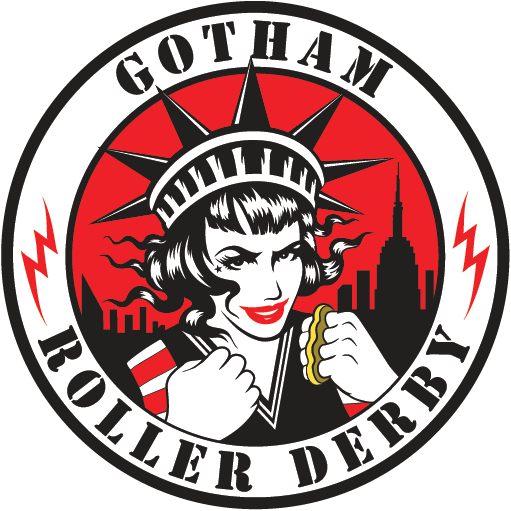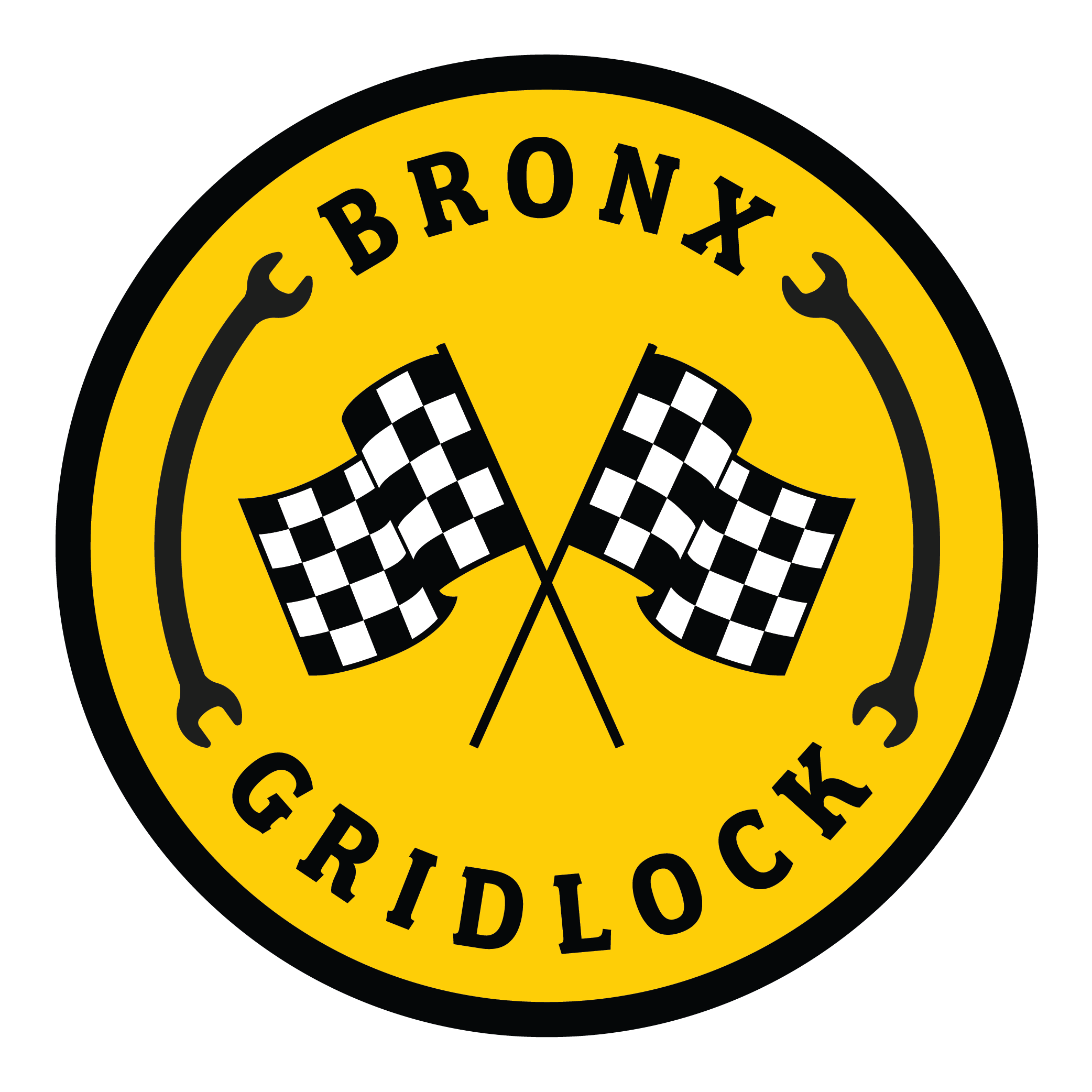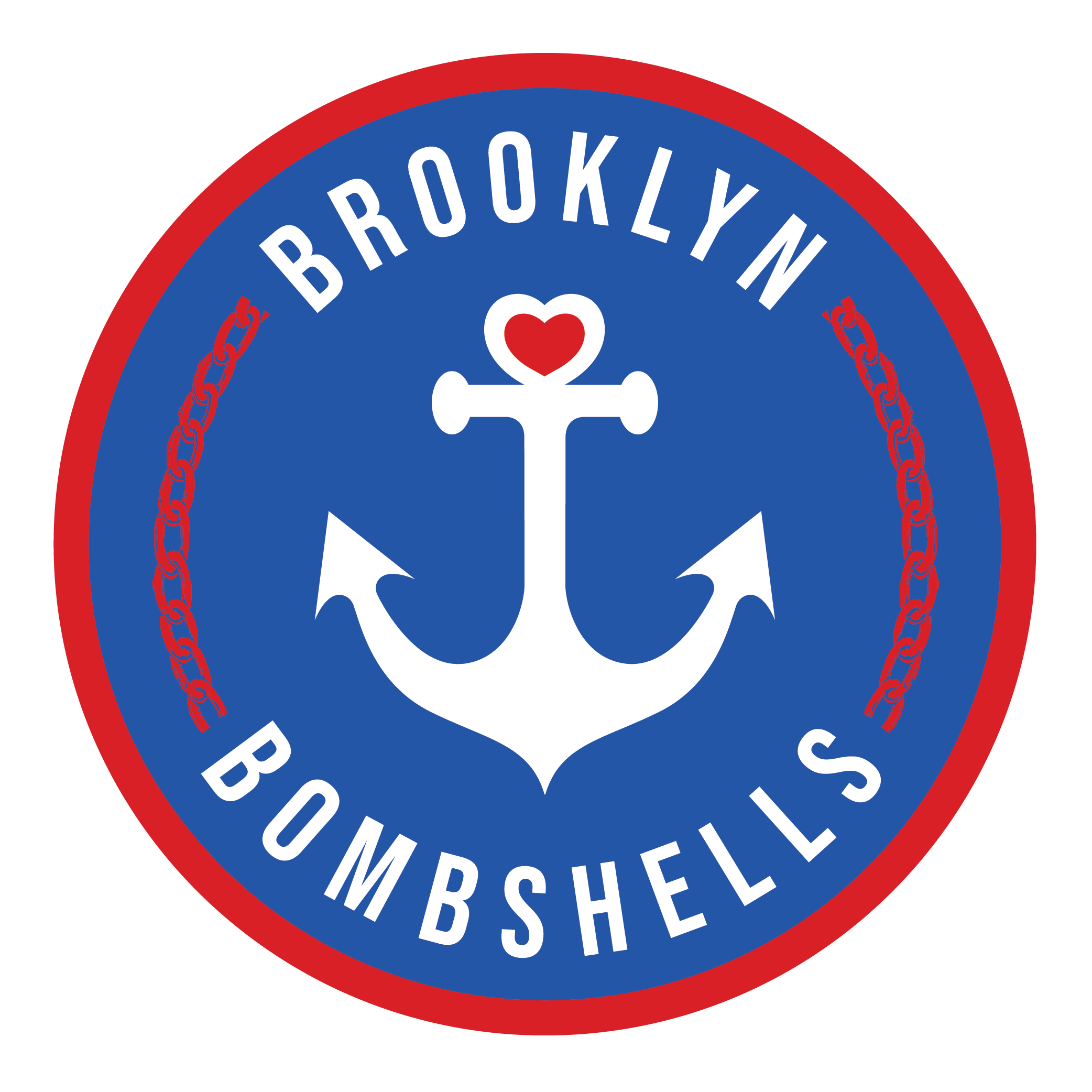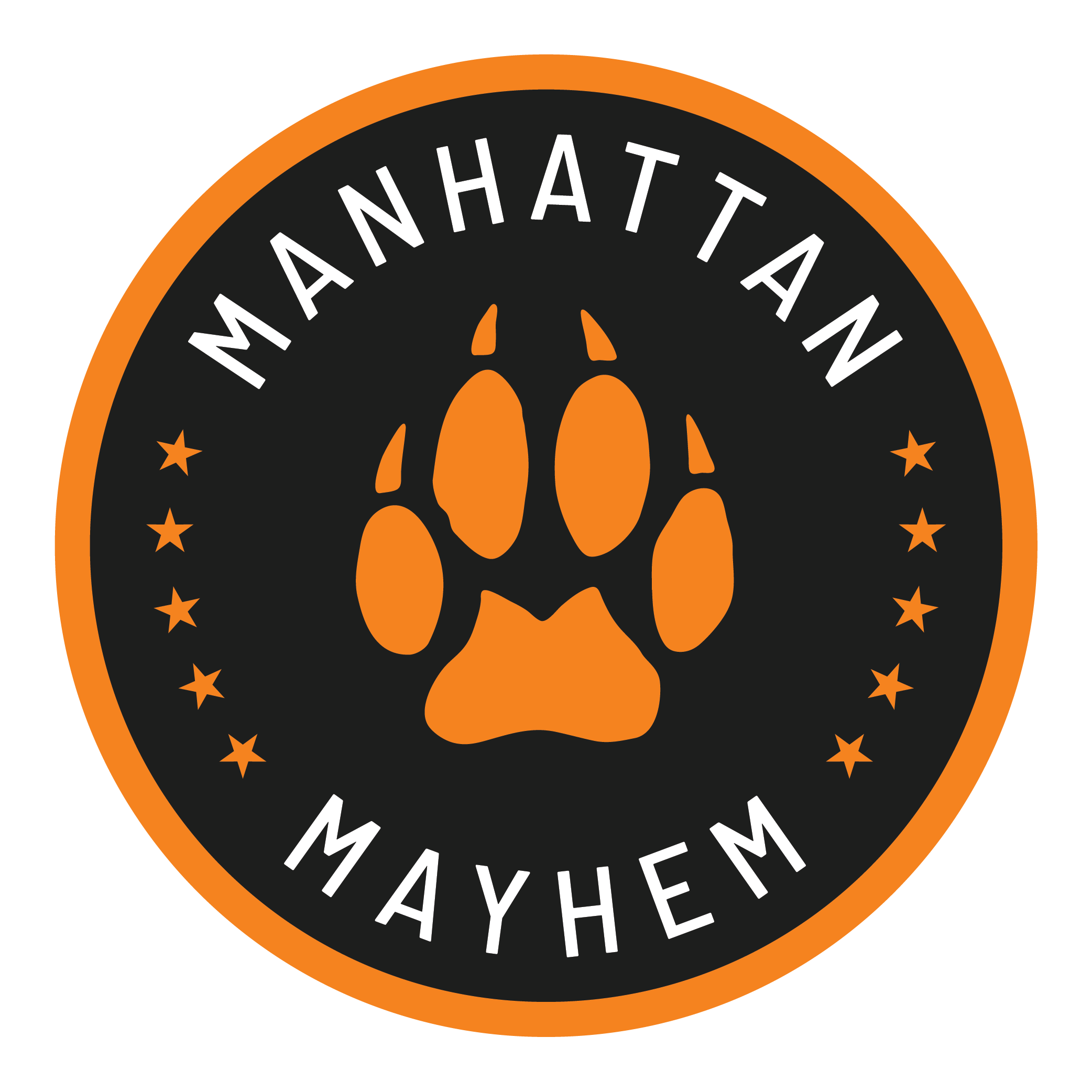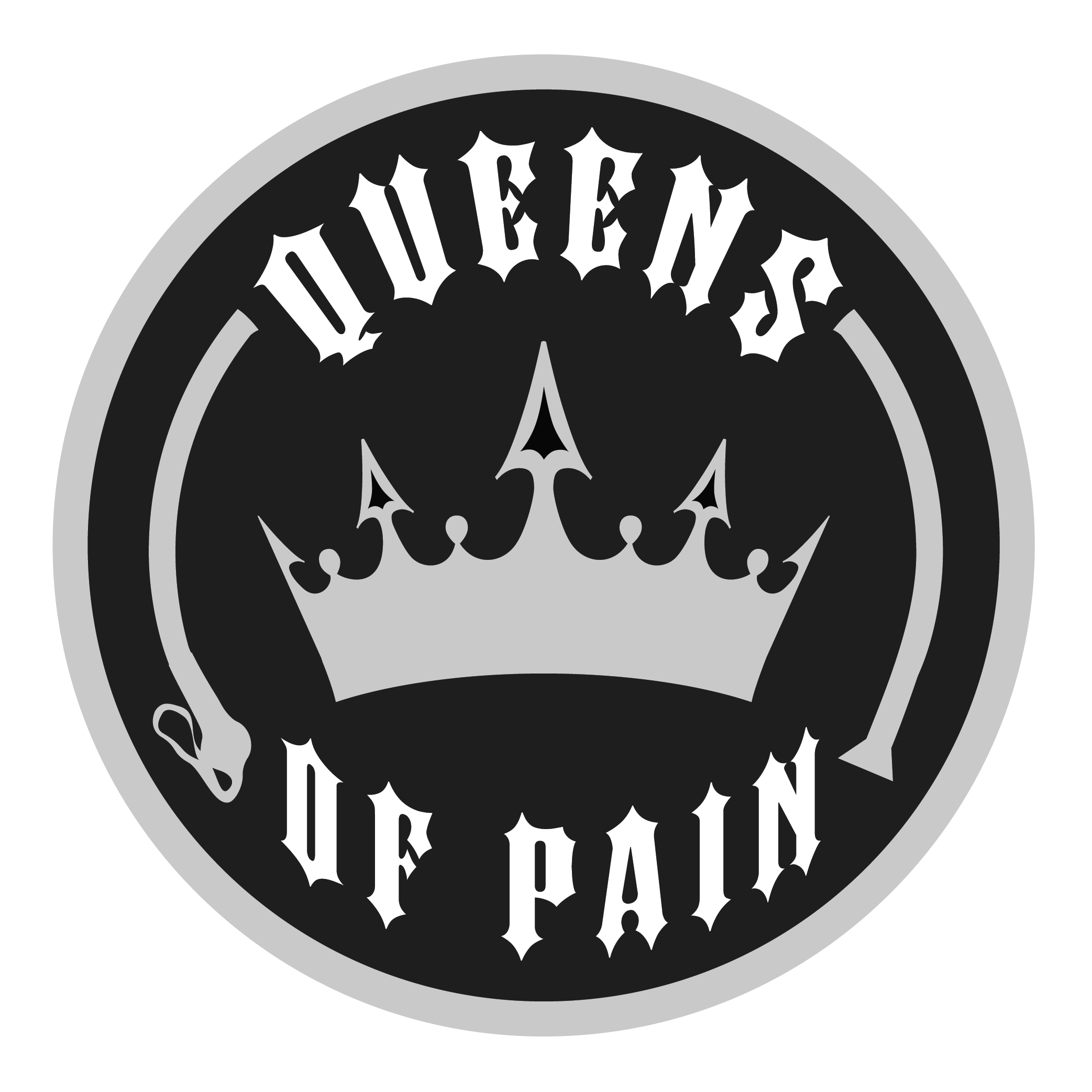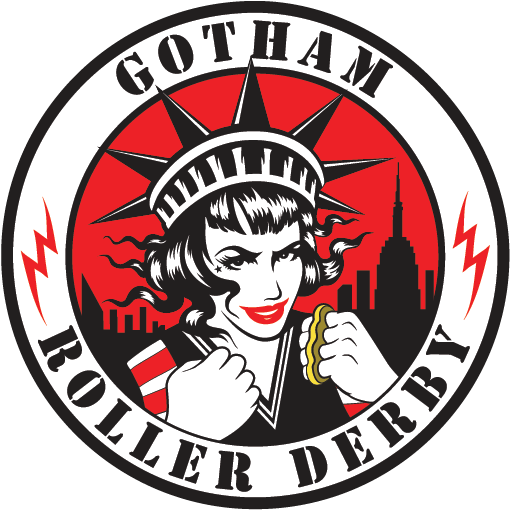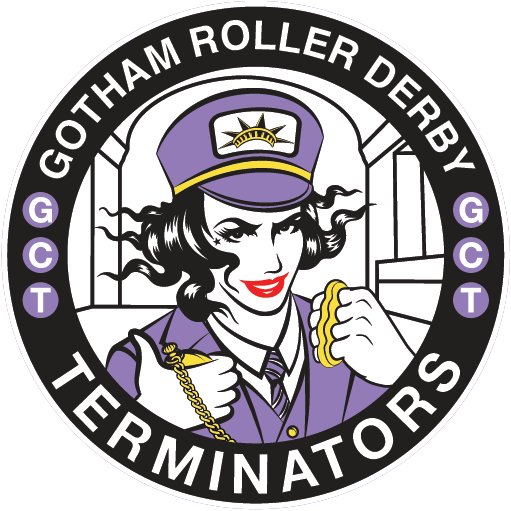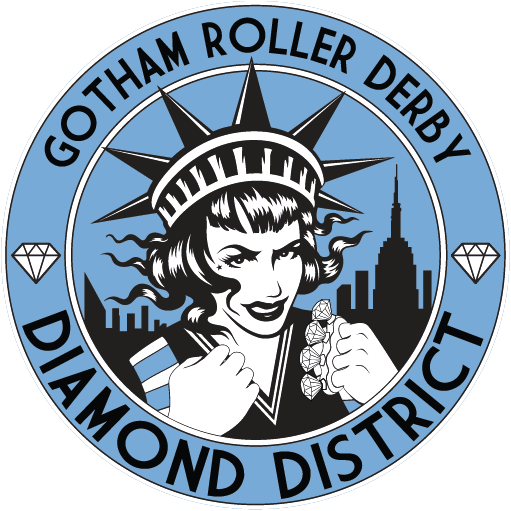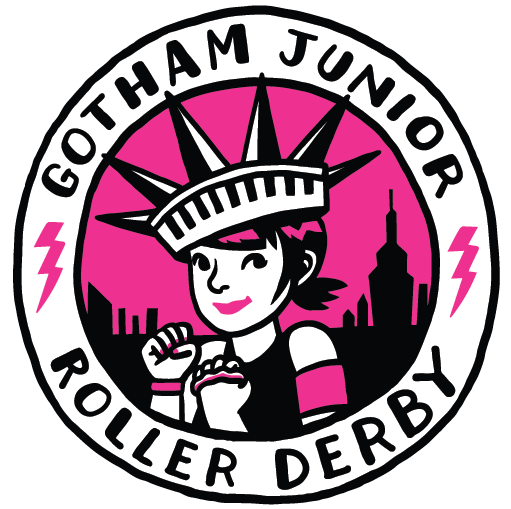Rules
Gotham plays flat track roller derby according to the latest rules and clarifications from the Women's Flat Track Derby Association.
The latest full ruleset is downloadable at the WFTDA web site.
Summary
The goals of roller derby are relatively simple. Each team fields a single point scoring skater ("Jammer") whose object is to lap as many opposing skaters as they can.
The remaining skaters who aren't scoring points work both on offense and defense at the same time -- to block the opposing Jammer and to clear a path for their own Jammer.
Setup & Scoring
Each team fields five players at a time.
Out of those five players, four are BLOCKERS and one is the JAMMER (point scorer).
The four blockers from each team line up together between a designated "Pivot Line" and "Jammer Line" marked on the track, to form a PACK, while the two jammers line up behind the Jammer Line.
The skater wearing the star on her helmet is the jammer. The skater wearing the stripe on her helmet is called the PIVOT. The pivot is commonly the pack leader and defensive play caller, similar to football's middle linebacker position.
On the whistle the pack and jammers may begin to engage each other.
On the first lap, the jammers earn no points, but the first jammer to legally pass each blocker on the opposing team and clear the pack is called LEAD JAMMER. You can tell if a skater is the Lead Jammer by looking at her designated jammer ref. The jammer ref will point to the jammer and hold his/her hand up in an “L” shape. The Lead Jammer reserves the right to strategically end the jam before the two minutes are completed by repeatedly gesturing with her hands on her hips. If both jammers commit fouls on their first lap, there is no Lead Jammer in that jam and it will run for the full 2 minutes.
Jammers lose Lead Jammer status if they are sent to the penalty box during the jam.
After a jammer completes her initial lap, she scores 1 point for each opposing skater she passes.
Jammers automatically score points against opposing skaters serving in the penalty box.
Jammer referees hold up fingers at the conclusion of each lap for points just earned.
Timing
Each two minute play is called a JAM.
Between each jam, there are 30 seconds for teams to line up for the next jam.
There are two halves in a BOUT. Each half is 30 minutes long and has an unlimited number of jams.
Teams may freely substitute players between jams, except for players stuck in the penalty box.
Penalties
Blocking with forearms, hands, elbows, or a helmet
Tripping, kicking, or blocking with feet or legs
Blocking while 20 feet ahead of or behind the pack (”out of play”)
Intentionally destroying the pack, such as by taking a knee or leaving the track in a way which rendering the remaining players ineligible to block
Blocking a skater in her back or head
Blocking while out of bounds, or blocking a skater who is out of bounds
Skating out of bounds to get around other skaters (”cutting the track”)
Illegal procedures: false starts, too many skaters on the track
The Penalty Box
A penalty costs 30 seconds of jam time in the box, served immediately so long as a seat is available in the box.
Refs gesture skaters to the box with a swooping motion of one finger to direct the skater off the track.
A jammer in the box is released immediately if the other jammer also lands in the box.
Common Questions About the Game
Why are there so many referees out there?
Much like in football, the ref squad internally divides areas of responsibility -- the front of the pack, the rear of the pack, scoring for one team, scoring for the other team, etc. The refs practice communicating with each other to determine the legality of action on the track.
Do skaters have to wear old-school 'quad' skates?
Yes. Ever since its invention in the 1930s, roller derby has traditionally been a 'quad' skate game. Quad roller skates promote control and stability, and their smaller wheel base reduces the chances for skaters to get tripped up on each others' skates.
Are there fights on the track?
Very rarely. The WFTDA rules call for the expulsion of skaters participating in fights, which helps to keep the skaters and referees safe.
Didn't roller derby used to be played on a banked track, with rails? At least that's what I remember from television...
Yes — for fifty years roller derby was played primarily on concave ("banked") tracks. These tracks were big and expensive and required reassembly as the derby skaters of the time barnstormed from town to town.
In 2001 and 2002, skaters in Austin, Texas, lacking (at the time) the budget for a banked track, created the first drafts of a modified ruleset to allow the same basic game to be played on a flat surface. The popularity of this style of play has been exploding around the world, as the 'play-anywhere' nature of the flat game has allowed skaters to learn the game without investing in a banked track infrastructure.
A handful of leagues in America play primarily on banked tracks (most notably in Los Angeles, Austin, and San Diego), while hundreds of leagues play the "flat track" game. Many skaters and a small number of leagues train for both styles of play.
Confused at a bout? Don't be shy about asking a neighbor in the stands!
